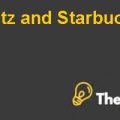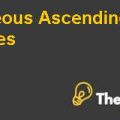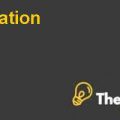Introduction
Kim Meyer, the head fund manager of Wall Street had bet against a number of movies that they won’t be successful such as Spiderman 3 and Pirates of the Caribbean. But, each time he was proven wrong and the movies became a huge success. On the other hand, his colleagues were able to generate millions of revenues because of these financing deals. In order to understand what other film makers knew that he did not and to go into more depth in terms of the funding of the film, this case study revolves around two characters, Kim Mayer and Dave Griffith. Mayer is looking for opportunities to invest in the movies and on the other hand, Griffith is a producer and he has been given 30 minutes to sell Hollywood to Kim Mayer. For Griffith, it is a big opportunity and he realize that he needs to do a proper financial analysis in order to produce a great story.
A number of different variables are selected in this study of success of a film. Different independent variables like opening theatres, genre, sequel, known story, etc. are analyzed in this report to determine their effect on the overall grossing of the movies. Regression is used mostly in this analysis and in the end of the report, other variables are also discussed that have a huge impact on the overall success of the movie.
Hollywood Rules Harvard Case Solution & Analysis
Set the Stage
Question No. 1: Initial Overview
In this question, we are asked to compute the minimum, maximum and average value of the following variables.
- Opening Gross.
- Total U.S Gross.
- Total Non-U.S Gross.
- Opening Theatres.
The results are shown in exhibit 1 of the file. This data is analyzed to get an overview of the datasets. Moreover, we have computed the total no. of comedy movies, i.e. 23 and the total no. of R-Rated movies, i.e. 15.
Question No. 2: Return on Investment
Part (a)
Michael London declared that the U.S’s gross return is about 12 percent per annum. In order to analyze whether this statement is true or not, we have calculated the ROI for all the movies and then, we have taken the average of it. The results are shown in exhibit 2 of this file, and from the results, it can be seen that the average ROI is greater than 12 percent that was declared by Michael London.
Part (b)
To determine the mean U.S gross ROI at a 95 percent confidence interval, we have calculated it by using the following formula.
Standard Deviation ± Z-value * {Mean/SQRT (n)}
The confidence interval calculated is 0.13-0.44.
Part (c)
From exhibit 2 displayed in the Appendix of this file, it can be seen that the mean ROI of the U.S gross is higher than the 12 percent stated by Michael London. It is around 29 percent. So it can be said that the mean ROI of U.S gross is significantly larger than what London stated.................
This is just a sample partical work. Please place the order on the website to get your own originally done case solution.












